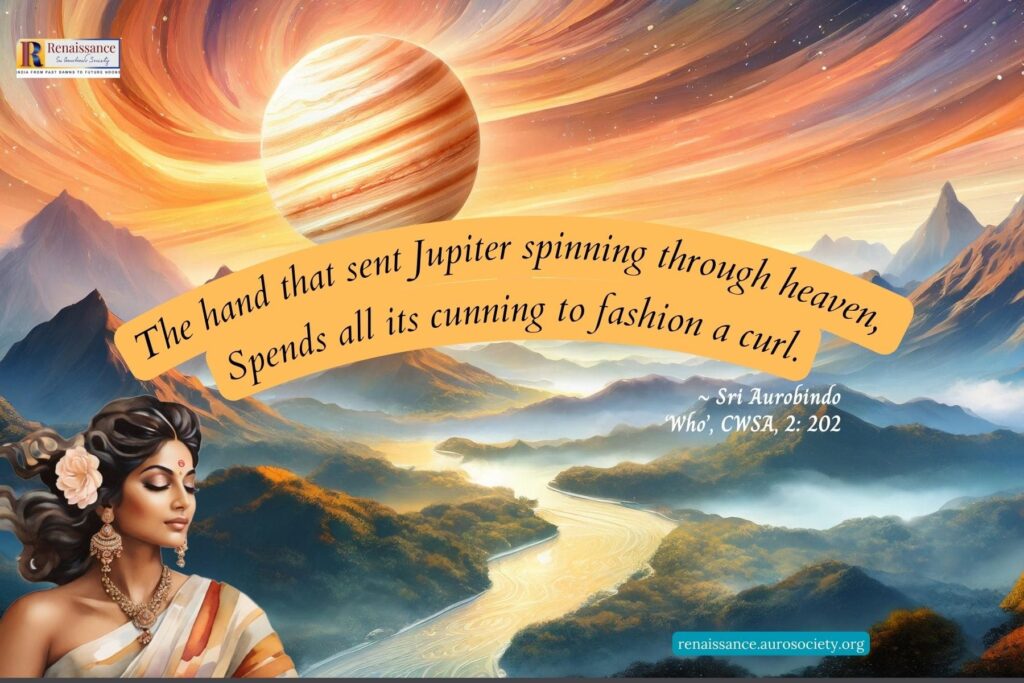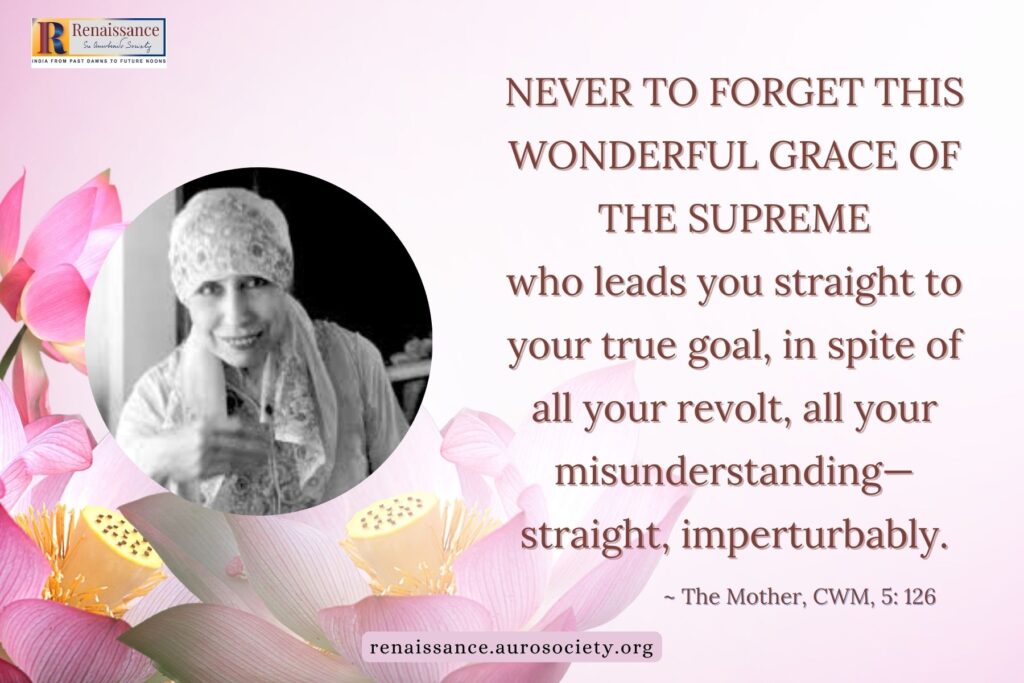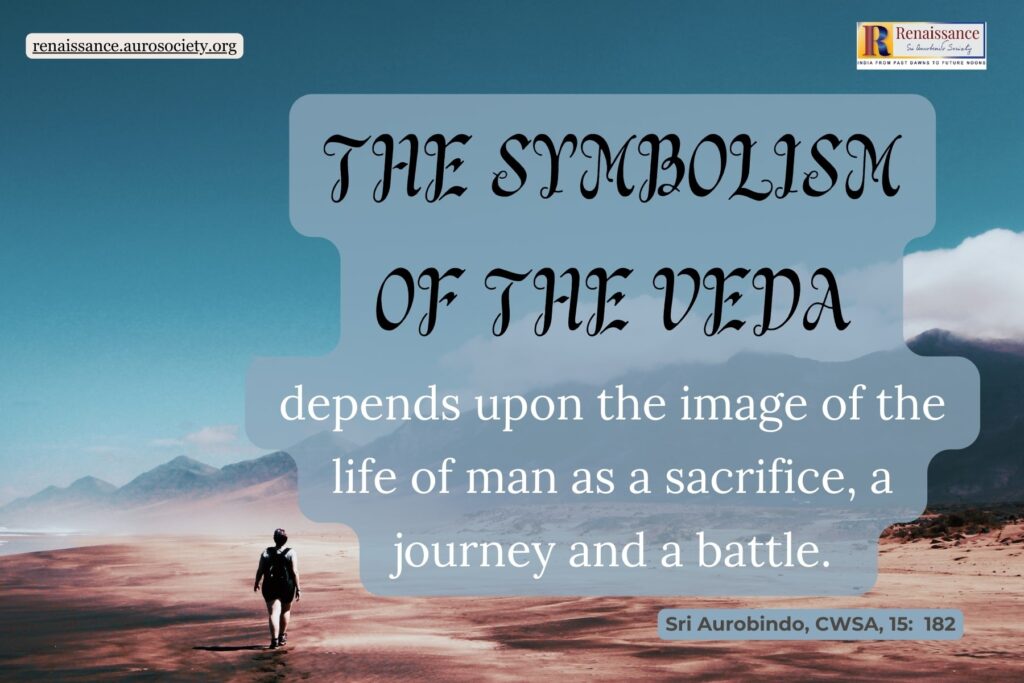What is the nature of religion? And how is it connected with spirituality or yoga? Are the two similar or is there any difference? Is there something unique about the Indian outlook on religion? Are there any deeper spiritual significances behind the various outer adoration and devotional practices that millions of people follow every day? These and a few more questions are explored in the current issue.
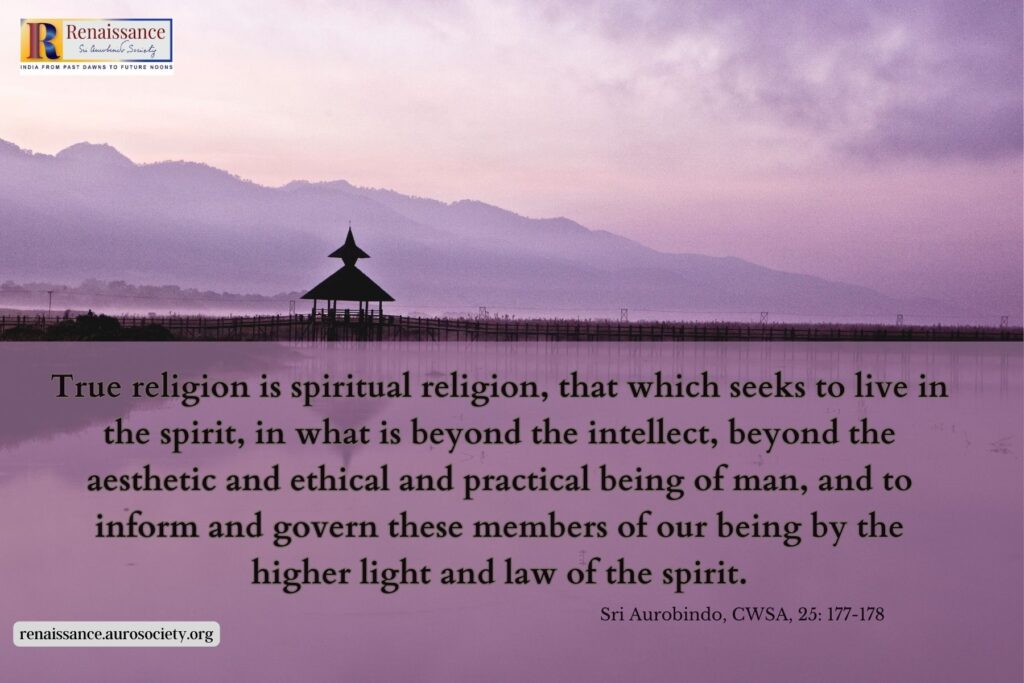
What is Religion?
According to Marcus Tullius Cicero (106 BCE–43 BCE), the highly influential Roman politician, lawyer and a master of Latin language, the English word ‘religion’ is derived from the Latin word relegere. It means “go through again” (in reading or in thought), “to return”. However, the later ancients (Servius, Lactantius, Augustine) and many modern writers gave a different etymological explanation. They connect the word religion with religare. It means “to bind fast” via notion of “place an obligation on,” or “bond between humans and gods”. Around 13th century the meaning “particular system of faith” for the English word ‘religion’ came into use.
But the original Latin word relegere gives us a precise understanding of the essence of the immortal religious aspiration in Man. That aspiration is “to return” to the source of our own being from which we somehow seem to have strayed, wandered or fallen.
The highest intuition revealed in all ancient religious traditions of the world indicates that there is a supreme Reality behind or beyond our physical body, life and mind. One may call it God or whatever name one prefers. Also, that Supreme Reality is not only the source of our own individual being. It is also the source of the universe, and yet is transcendent of it all. This discovery is expressed in different ways in various religions.
The Mother speaks perfectly about the origin of Religion in the following words:
Religion belongs to the higher mind of humanity. It is the effort of man’s higher mind to approach, as far as lies in its power, something beyond it, something to which humanity gives the name God or Spirit or Truth or Faith or Knowledge or the Infinite, some kind of Absolute, which the human mind cannot reach and yet tries to reach. Religion may be divine in its ultimate origin; in its actual nature it is not divine but human.
~ CWM, Vol. 3, p. 76
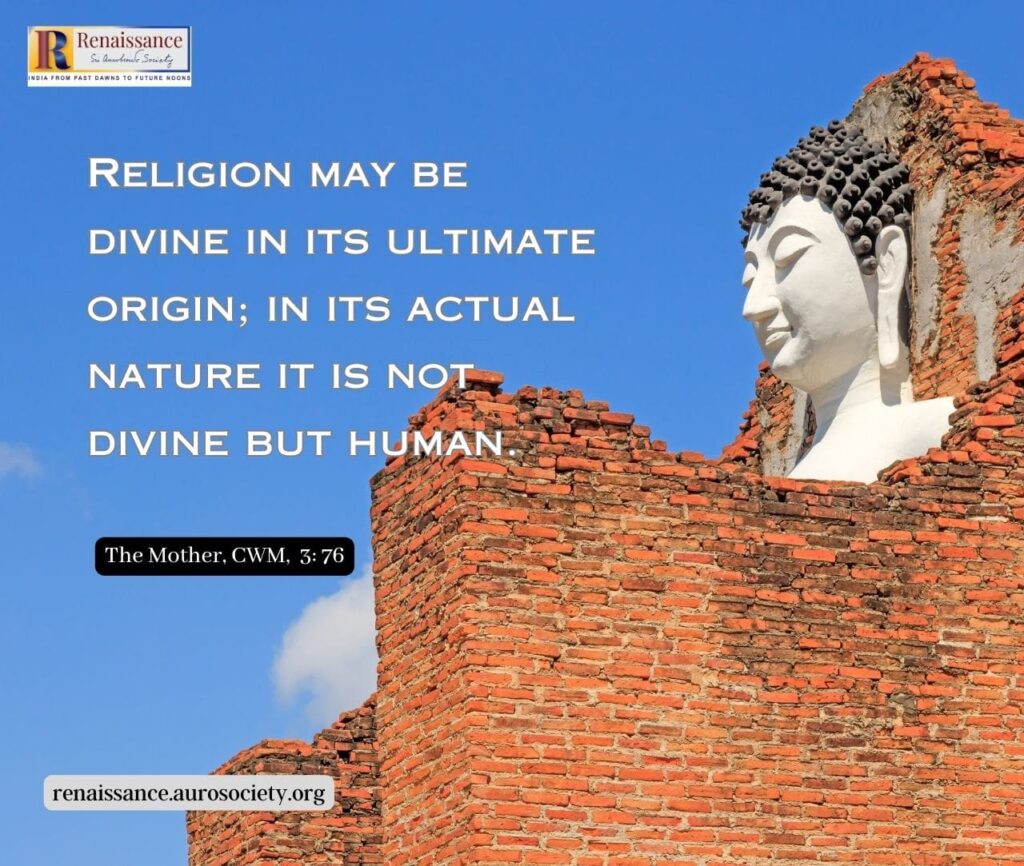
Man-made Nature of Religions
All religions, says the Mother, have a similar story to tell. The occasion for a religion’s birth is generally the coming of a great Teacher who reveals a Divine Truth. She continues:
But men seize upon it, trade upon it, make an almost political organisation out of it. The religion is equipped by them with a government and policy and laws, with its creeds and dogmas, its rules and regulations, its rites and ceremonies, all binding upon its adherents, all absolute and inviolable. Like the State, it too administers rewards to the loyal and assigns punishments for those that revolt or go astray, for the heretic and the renegade.
~ CWM, Vol. 3, p. 77
Sri Aurobindo explains this man-made nature of religions by making a distinction between ‘true religion’ and ‘religionism’.
There are two aspects of religion, true religion and religionism. True religion is spiritual religion, that which seeks to live in the spirit, in what is beyond the intellect, beyond the aesthetic and ethical and practical being of man, and to inform and govern these members of our being by the higher light and law of the spirit.
Religionism, on the contrary, entrenches itself in some narrow pietistic exaltation of the lower members or lays exclusive stress on intellectual dogmas, forms and ceremonies, on some fixed and rigid moral code, on some religio-political or religio-social system.
~ CWSA, Vol. 25, pp. 177-178
READ:
Sri Aurobindo on Religion as the Law of Life
Difference between Religion and Spirituality
In The Life Divine , Sri Aurobindo gives a wonderful definition of spirituality (CWSA, Vol. 22, pp. 889-890). He first speaks of what it is not, and gradually leads us to understand what it is.
- High intellectualism, idealism, ethical turn of mind, moral purity, religious fervour, emotional aspiration, mental belief or faith, well-regulated conduct in accordance with a religious formula – these can be preparatory and purifying movements. And they can be helpful to a seeker in the stages of mental and emotional evolution.
- But spiritual evolution is something beyond all these things. It is essentially an awakening to the inner reality of our being beyond mind, life and body.
Thus, a spiritual seeker can progress in initial preparatory stages through religion. But Sri Aurobindo also makes an important distinction between the spiritual essence of a religion and the outer religious forms. He calls the later ‘religionism’, which has a tendency to become dogmatic, creedal and limiting).
Also read:
Religion – Helper or an Obstacle to Spiritual Life?
The essence of religion is connected with the highest aspiration in humanity, that of returning to the source, the origin of All and Everything, the source of Being and Existence.
But then how is religion different from spirituality? Are there some commonalities between them? The Mother gives a succinct response when she says:
The spiritual spirit is not contrary to a religious feeling of adoration, devotion and consecration. But what is wrong in the religions is the fixity of the mind clinging to one formula as an exclusive truth. One must always remember that formulas are only a mental expression of the truth and that this truth can always be expressed in many other ways.
~ CWM, Vol. 15, p, 27
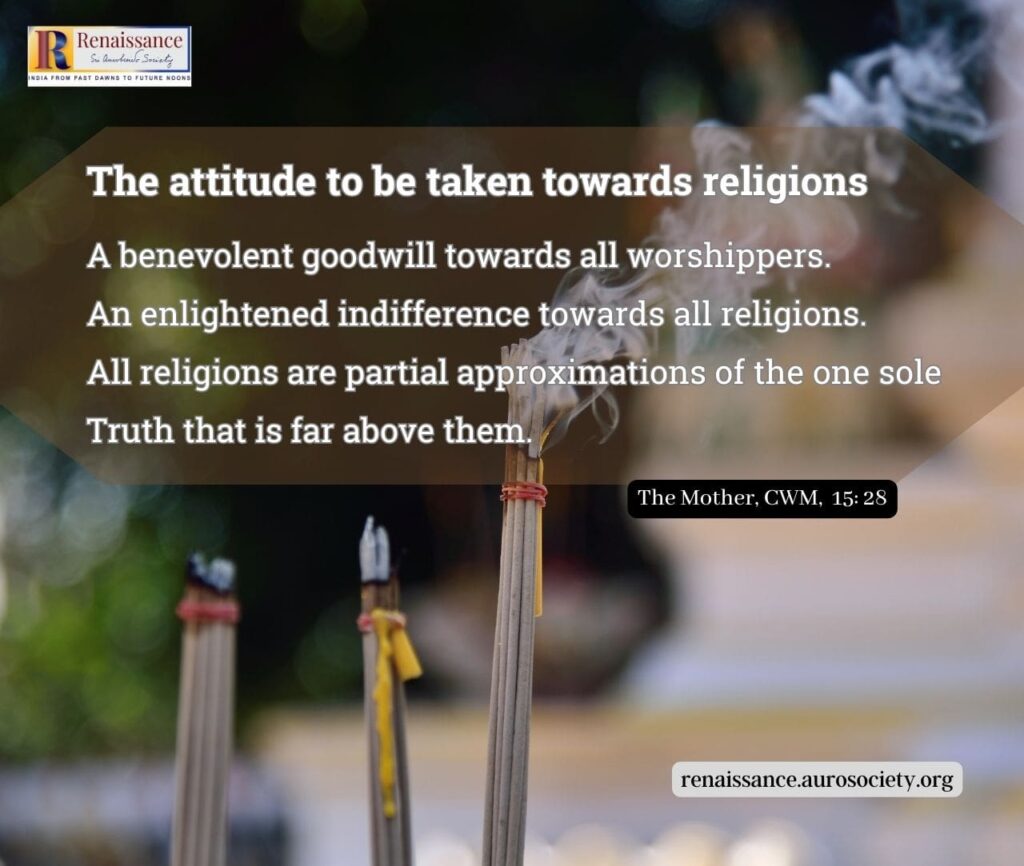
Read:
The Mother on the Origin and Social Crystallization of Religion
Nolini Kanta Gupta explains the difference between a religious approach and a spiritual approach to seeking the Divine. We find this in his essay titled The Spiritual Genius of India (in the book Evolution and the Earthly Destiny, pp. 103-104). Taking some liberties with the formatting, we list below his key points:
- Religion starts from and usually ends with a mental and emotional approach to realities beyond the mind. But spirituality goes straight forward to direct vision and communion with the Beyond.
- Religion labors to experience and express the world of Spirit in and through a turn, often a twist, given by the mental being—manu—in man. It bases itself upon the demands of the mental, the vital and the physical complex – the triple nexus that forms the ordinary human personality and seeks to satisfy them under a holier garb. Spirituality, however, knows the demands of the Spirit alone. It lives in a realm where the body, the life and the mind stand uplifted and transmuted into their utter realities.
- Religion is the human way of approaching and enjoying the Divine. But spirituality is the divine way of meeting the Divine.
- Religion, as it is usually practiced, is a special art, one – the highest it may be, still only one – among many other pursuits that man looks to for his enjoyment and fulfillment. But spirituality is nothing if it does not swallow up the entire man, take in his each and every preoccupation and new-create it into an inevitable expression of its own master truth.
- Religion gives a moral discipline for the internal consciousness, and for the external life, a code of conduct based upon a system of rules and rites and ceremonies. Spirituality, on the other hand, aims at a revolution in the consciousness and in the being.
In this Issue
In the feature titled ‘Sri Aurobindo on Religion as Law of Life’, we present a selection from The Human Cycle. It helps us understand why historically religion has not been a sufficient guide for conducting individual and collective life. But this need not be so if we understand the true nature of religion, which is its spiritual core.
We also feature selections from the Mother regarding the ‘Origin and Social Crystallization of Religion‘. In a feature titled ‘Is Religion a helper or an obstacle to spiritual life?‘ the Mother helps us understand that religion can even be a help to sincere seekers who have an individual capacity to find the Divine.
The feature titled ‘Religion, Yoga of Bhakti and the Conception of the Divine‘ highlights selections from two chapters of Sri Aurobindo’s The Synthesis of Yoga. We find here a detailed description of commonalities and differences between popular religion and Yoga of Devotion. Also presented is an interesting analysis of how fear of God does not find any place in true Bhakti or devotion.
We carry the spirit of bhakti in our Book of the Month feature.
We highlight Nirodbaran’s book titled ‘Twelve Years with Sri Aurobindo‘. This book truly gives a very personal account of numerous ways in which one may practice Integral Yoga by cultivating an intimate relation with the Divine and serving the Divine. We zoom in on a special excerpt where he describes some delightful aspects of Champaklal’s ‘bhakta’ personality. Reading this is an entire education in what it means to truly give oneself to the Divine.
‘On Morality, Religion and Spirituality‘ highlights the differences between a moral life, religious life and spiritual life. What should be one’s attitude toward Religion when one enters the path of Yoga? We find some insightful answers in a few passages by the Mother. In another feature we explore with the help of the Mother’s words — do heaven and hell of the religions really exist?
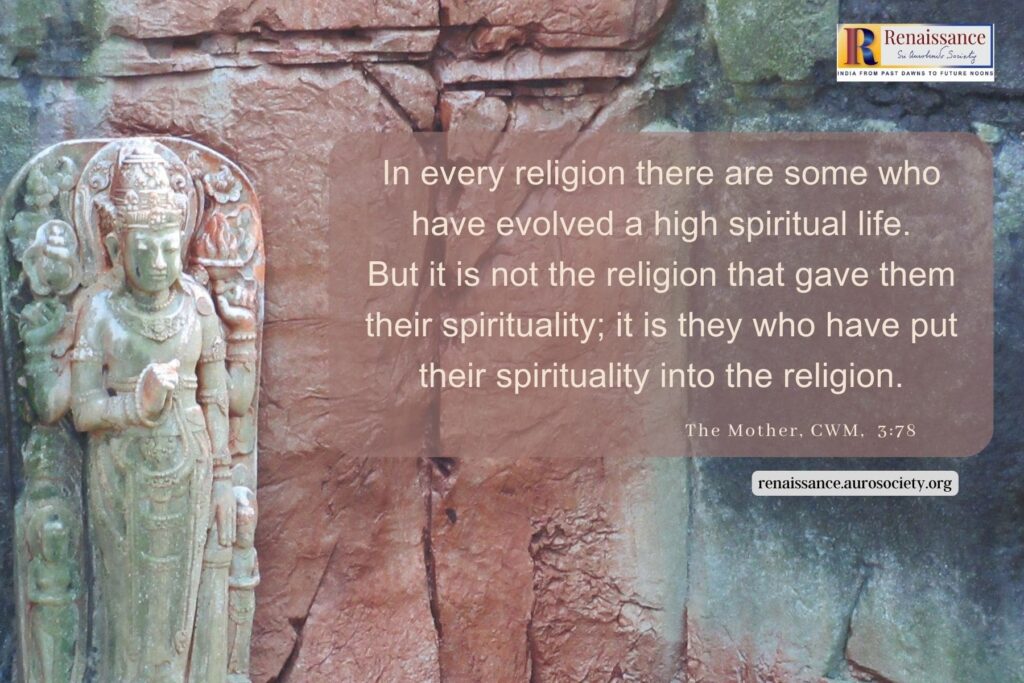
More on Religion and Yoga
The two-part article titled ‘Indian View on Religion, Dharma and Life‘ highlights the Indian term dharma when speaking of Indian outlook on religion. Part 1 reminds that ancient Indian culture tried to turn the whole of life towards spirituality by a persistent filling of every circumstance of life with the religious sense. Part 2 summarises some fundamentals of Sanatana Dharma as explained by Sri Aurobindo. The necessity for outer forms of religious practices is also briefly explored.
Monica Gulati joins the Renaissance group of authors and contributes her first piece in this issue. In ‘Stilling the Mind and Tuning into Inner Silences‘ she highlights the necessity of silencing the thoughts and vital movements as an essential foundation of the sadhana in the path of Integral Yoga.
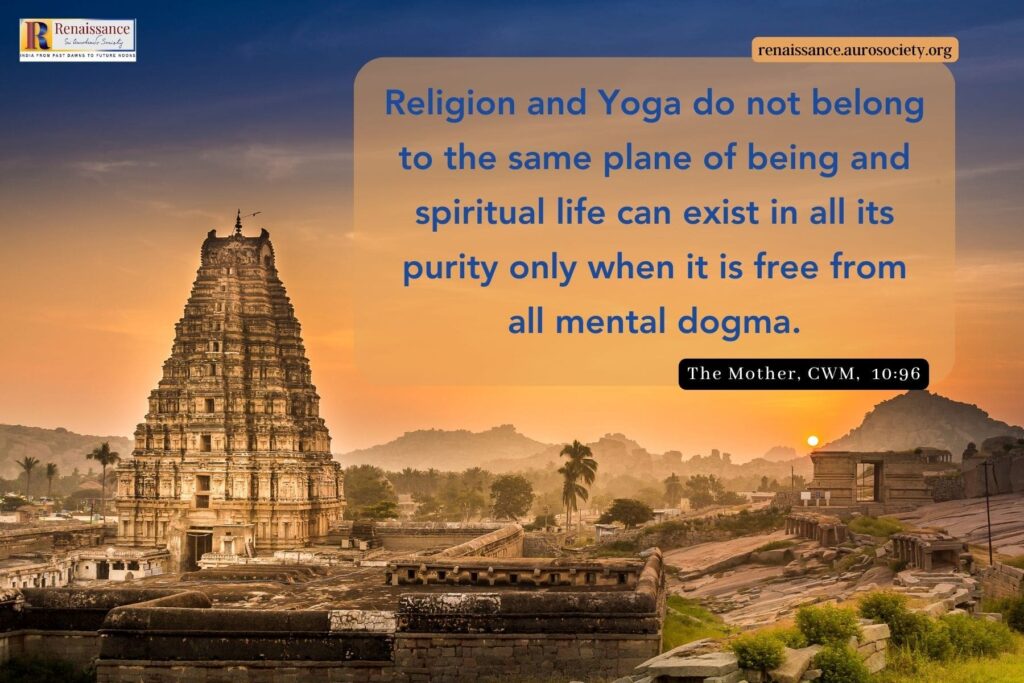
In ‘Blessed are the Pure in Heart‘ Narendra Murty reminds that religion while being a means of social cohesion can easily become a source of conflict. Most religious oriented people tend to focus only on the external aspects. And that is why religion as such does not help in inner transformation. For that one must go on an inner search, the path of yoga.
In Part 5 of Prema Nandkumar’s essay, Sri Aurobindo’s Interpretation of Indian Culture: The Mahabharata, the focus is on Sri Aurobindo’s fascination with the legend of Savitri in the Mahabharata. With a sage’s vision he saw Savitri as the redeemer of the entire humanity.
As always, we offer this work at the lotus feet of Sri Aurobindo and the Mother.
In gratitude,
Beloo Mehra (for Renaissance Editorial Team)

~ Design: Beloo Mehra

